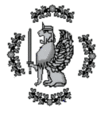Mikkelsund
This article refers to a nation which is currently in a state of inactivity. You can help make the article reflect that or ask on the talk page for further information. |
Laandbedegrijdvaelaelersbedegrijd of Mikkelsund Laandbedegrijdsvaelersberdegrijd vi Mikkelsund Samosprávné zřízení Mikkelsundské Landsbedegrîdvaelerbedegrîd Mikkelsund | |
|---|---|
| 'Motto: 'Mikkelsundian : Fȏrrid, Honnor, Frijgmitt Latin: Honnor, Virtus, Libertas | |
| Anthem: Det lijd van Wappendegrijds | |
 Bojanov (Baegnaw), Czech Republic | |
| Capital | Mikkelsund, Baegnaw |
| Largest city | Baegnaw (647) |
| Official languages | Czech, Mikkelsundian, Teerehyygener |
| Demonym(s) | Mikkelsundian |
| Government | Laandbedegrijdsvaelersbedegrijd |
| Legislature | Bevelsaeten |
| Establishment | 7th April 1618 (fictitious history) |
| Population | |
• (2 mikkelsundians, 2 czechs, 1 dog) census | 5 |
| Time zone | CET |
Mikkelsund ( Mikkelsundian: Laandbedegrijdsvaelersbedegrijd vi Mikkelsund, Czech: Samosprávné zřízení Mikkelsundské, teerehyygener:Landsbedegrîdvaelerbedegrîd Mikkelsund) is a micronation in Central Europe. It is the part of the Czech Republic. The official capital of the country is also called Mikkelsund, but the head of state lives in Baegnaw,the nearest czech village. Mikkelsund has no stabile population, but a few people have the information about it. The land is situated in CHKO železné Hory and it is the target of many tourists, fishermans and horse riders,that they really do not know, that Mikkelsund exists. Because Mikkelsund has a few members, the political system and history is mostly fictitious, but the culture, language and lifestyle exists in the group.
History
This part of an article is a fictive story.
Founding of the Nation, Medival
There are many theories trying to explain, how the Mikkelsundian nation was created. The most popular of this theories said, that the Mikkelsundians are from the Baltic Slaves, who escaped from the East Germany (Brandenburg and Saxony) during the frankish Drang nach Osten. Their language comes from the old English, old Lower German and from various german languages. It has also the influence of Czech, French, Dutch and many other languages. During the mikkelsundian colonization of their homeland there were a lot of wars, but in the times of king Karel IV the wars ended. The function of Landverwaltungsfuhrer, later in mikkelsundian laandbedegrijdvaeler was established as the mikkelsundian representative of the czech king. Mikkelsund was still not the united nation, there were many of tribes: Mayhaveners, Teerehyygners, Frijgeburgs, Lijhedyygs etc. and every tribe has his own laandbedegrijdvaeler. Interesting is, that mikkelsundians do not become christians on the level of nation.
First Laandbedegrijdvaelers, Baarenites, Haegmar the Christian
First name-knowed laandbedegrijdvaeler, Haegmar van Baaren, known as Waegmar the Christian was the only laandbedegrijdvaeler, who let be baptized (except Haegmar van Baaren). His son Thaegmar van Baaren issued a law, known as Thaegmar decree. It said that the Baarens, never declare war to the Czechs. Later, Saagmar the Great use it to the new Mikkelsundian state. After him his son Haegmar van Baaren came to the thorne. He leads weak, and therefore was killed by the Mayhaveners and his head was impaled on a wooden stake.
Reign of the Mayhaveners
The first leader from the Mayhaveners was Laantaal van Mayhaven. He had a stong army and graet influence, but he didn't unify all of the mikkelsundian tribes. During the reign of mayhavener laandbedegrijdvaelers many people cannot write, and therefore are no entries about them. From mayhavener laandbedegrijdvaeler is known only Laantaal and two last laandbegedrijdvaelers: Wraantaal van Mayhaven and Fȏrelaan van Mayhaven, as known as Fȏrrelaan the Drunkard. At the end of their reign there were high taxes, that mayhaveners didn't send to the king. It caused a revolt, initiated by Goedritt van Teerehyygen, wich came out victorious for him and Saagmar the Great, the future king of Mikkelsund.
Saagmarid Epoque

The mikkelundian nation has been created during the 17. century. The story said that that Saagmar the Great unified it. Saagmar the Great is in Mikkelsund known as a national hero and founder of the Mikkelsundian state. As the begin of the Mikkelundian national-founding is known the 1618, after the Battle of Hægen, where Saagmar defeated the Mayhavener laanbedegrijdvaelers, and become the leader of the Mikkelsundian nation and found the epoque, known as Saagmarid Empire (1618-1656). This age was a time of prosperity, rise of mikkelsundian culture and intelligence, founding of the mikkelsundian font and mikkelsundian law and became resource for modern mikkelsundian writers. This era culminated in a time, when dependence on czech king were abolished and the Mikkelundians proclaimed Saagmar as a king,despite the Pope and Habsburgs, what were leading this time. It provoked him and in 1651 Habsburgs invaded Mikkelsund. The Fjerld (power), what was called the Saagmarid army, defended succesful and in 1653 went to attack. threHowewer,e years later Saagmar was dead after hard injury. As the regent was elected Goedritt van Teerehyygen, king's commander. As result of a conspiracy to eliminate Goedritt and young prince Werhloor, the 6 years old Saagmar's son mikkelsund collapted. After 1660 the laandbedegrijdsvaelersbeedegrijd was established under the protection of Habsburg empire. The first after- Saagmarid laandbedegrijdvaeler became Laarwaag Niederhappen, one of the conspirators.
Niederhappeneder epoque, absolutism, the Wappendegrijd
During the Niederhappen era the niederhappener laandbedegrijdvaelers led Mikkelsund. First of them were under dependence to the king, but the king's influence gradually dwinded. After the fall of Saagmarid empire the niederhappener regime need to solve the problems with great hunger, plaque epidemies and bandits. As the time went, Niederhappener family became the typical aristocratic family. They were richest and richest, but at the expense of all of the Mikkelsundians. They hate them, because Niederhappeners pressing them to accept a catholic religion. The major part of the mikkelsundian population were pagans. It was the one from the more reasons that was formed the Wappendegrijds. Wappendegrijds (wappen= weapon, grijden=holding, mans , who holding the weapons) were the groups of armed civilians, who fought against the Niederhappen regime. The targets were different, by the group. Some groups were the bandits, some freedom fighters, some of them was smuggled goods to pour, hungering Mikkelsund. First Wappendegrijds were formed from deserters from Saagmarid army. During the Niederhappener age the influence of laandbedegrijdvaelers was differently major. Over the years the Wappendegrijd helped every power that move Miederhappeners out of the gouverment: Napoleon Bonaparte during the Napoleonic Wars or the Prussian Forces during the Prussian-Austrian war. In 19th.century Niederhappeners became a family of rich bussinessmans. They have cocoa and cotton plantages in the New World. Some of them are reformators and patriots, but some of them were only the habsburg puppets.
1848-1850 Nyyuwsaagmarid uprising
During the ,, Spring of Nations" in 1848 erupted a lot of revolutions on European continent. The mikkelsundian national revolution begin in December 1848 under the command of general Werhloor Reege and a group of patriots from Newsaagmarid (often is used mikkelsundian Nyyuw-) movement, its goal was to set Mikkelsund free of the Niederhappens. It begins with the prison mutinies of political victims of niederhappener regime in Karlaaven and Kaergener Fjerld (now Saagmarskammp, Laand vi Mikkkelsund). In February 1849, the city of Mikkelsund was conquered and the land was stabilized by the revolutionary gouwerment. The Niederhappener laandbedegrijdvaeler was put to the prison and waited for an execute. In March was established the Mikkelsundian Newsaagmarid Kingdom under the council of regency. The king may be elected soon, but it was not without Habsburg's answer. Austria was nod inclined to the revolutionary gouverment, because the gouverment did not pay the taxes and was not obedient to the Kaiser. In May 1849 the austrian kaiser's army under general Benedek, sended from Italy after 1848 invaded Mikkelsund. In the Battle on Kaergen (12.- 18. May 1849) the mikkelsundians resist and in 20. May 1849 the ceasefire was signed. In Summer 1849 the constitution of new kingdom was created and Werhloor Reege was elected by the council of regency as a king Werhloor I.. But Benedek was returned in August with more power. Austrian forces attacked from north and south. During the Battle of Laamstad (28. August- 3. September) 1849 the mikkelsundians were defeated and in September the 5th fell the city of Mikkelsund. Niederhappener laandbedegrijdvaeler was rescued from the prison and all of the gouverment,including Werhloor I., was executed.
Modern Era
Fall of Niederhappen regime, War 1919
At the times the first World war, there was last wave of massive wappendegrijd resistance. Mikkelsundians avoided to serve in austrian armed forces in a large scale. The Niederhappenner regime did not no longer manage it and in 1918, after the end of austro- hungary and its military and political support they wanted to retain their power. During the WWI, in USA was formed the Mikkelsundian national foreign council under Joan Thyyrnreeger, that wish to join to Czechoslovakia under the autonomous gouverment. Niederhappeners wish to gain their own independent duchy, like Liechtenstein for example, with politics of isolation and without the political change, but it was against the choice of mikkelsundian people. Niederhappeners hired the professional army, mostly from german war veterans after 1918, as known as the Freikorps. A lot of later Nazis served in it. Therefore, when the Niederhappeners did not surrender in 1918, the great uprising was broken out. Patriotical groups of Wappendegrijds despite initial chaotic situation, unite thereselves and went out of the woods. The common people also went to the streets and demonstrated. Often they met with a machine gun fire. In october 1918, when the rebellion began, they manage to liberate the city of Mikkelsund and Niederhappeners must retreat to Karlwaag. Finally Karlwaag was liberated in 1920 by revolutionary troops with Czechoslovak legions, that respect Mikkelsund as their own land and represent here the interests of new- formed Czechoslovakia.
During Czechoslovak first republic, World War II
Mikkelsund in Czechoslovakia

After the war 1919, the first free elections was established in Mikkelsund. There were two political parties: The National Party (Nasjonaelpartag) and the Social Party (Socialpartag). As a chairman of the new mikkelsundian home rule was elected June Karl Werhlooren, later known as Karl Werhlooren. As the laandbedegrijdvaeler was elected czechoslovak prezident Tomáš Garrigue Masaryk, as a tribute to him. After his dead Mikkelsund start to change. As a laandbedegrijdvaeler was elected Karl Werhlooren. period 1935-1939 was known as a period of growing mikkelsundian nationalism.There are pro- republic antifascist nationalistic movement under Werhlooren and profascist minority under Karl Fost. In 1930 the czechoslovak offices enabled the Mikkelsundian national guard (Mikkelsundikken Fjerld), the pretenders of nowadays mikkelsundian army. It was the pro- republic militia. They participated on the builiding of forts on the borders and they may help the czechoslovak army in the proposal war with Hitler. More than 1/3 of nation join it. After the 1938 asked the mikkelsundian gouverment president Beneš in exile, if they can declare independence from the new german-controlled puppet gouverment of Czecho-Slovak second republic. President allowed it, but only against germans. In december 1938 mikkelsund declared indepence without the reaction of Czechoslovak gouverment. Then also declared neutrality.
Independent Mikkelsund,world war II
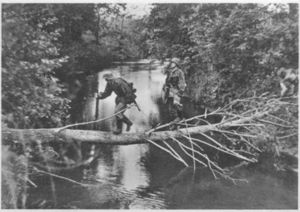
In new independent Mikkelsundian state stay Karl Werhlooren in his function. Chairman of new gouverment became general Karl Mineforrid, the commander of new Mikkelsundian army, created from nationala guard. Week after the declaration Werhlooren declared mobilisation of the army. From begin, they must keep good relations with Germany, but trully they have secret contracts with Beneš, that they prepare to defend Mikkelsund. After the events in Munchen, many Czechoclovaks join the new Mikkelsundian army. 2 regimets are created from czechoslovak soldiers and constabulary. During the Taeferaktions (stealing actions) was a lot of warfare material given to Mikkelsund from former czeechoslovak army, constabulary and civilians. Mikkelsundian state during the years 1938-1938 has not democratic regime. It was authoritative (provisional) military gouverment, but majority of mikkelsundians respected it. A lot of forts, strongpoints, trenches and other fortifications were built all over Mikkelsund. The land prepared war with Germany. Joanid Karl Cridden, the former captain of czechoslovak army and from 1935 the guardist, became the leader of Mikkelsudian armed forces.
Mikkelsund afer WWII, communist invasion to Mikkelsund
Communist Czechoslovak era
90s Civil War, New Laandbedegijdvaelersbedegrijd
Nature, Sights
Mikkelsund lies in East Bohemia, in the centre of Železné Hory (Aarensbejge) nature reservation. The weather in Mikkelsund has central european character.Upper Mikkelsund (Yyper Mikkelsund) lies in Bojanov valley (Baegnawer walle), there are green pastures and swamps on the banks of Kaergen river. Kaergen is the border between Mikkelsund and other czech lands. On the bank of Kaergen are green pastures and swamps. On the south of Upper Mikkelsund are wooded hills of Aarensbjerge. Lower Mikkelsund (Dolní Mikkelsund) border with Upper Mikkelsund in central axis of the land. This ,,central axis" of the land goes from Dolikken in the west to Laamstad in the east and mostly consist of wooded hills of Aarensbjerge. Highest point of Mikkelsund lies near czech Vápenice (Vyypen) village and is 529 meters high. The lowest point is Kaergen in Mikkelsundikken Baegnaw and has 432 meters. There are many loveful countrysides and technical sights in the area. For example- Vápenice cave in Lower Mikkelsund or Rockenfall- little waterfall. From technical sights there are remmants of the old cable car,wich imported stones to build the dam in Seč.
-
Rockenfall Waterfall, near Waalenhyykt, Laand vi Mikkelsund, Upper Mikkelsund
-
Laanderwalle -the rests of agricrtulat walls near the border between Upper and Lower Mikkelsund,Kraj Polánka, Lower Mikkelsund
-
Countryside in Upper Mikkelsund , Autumn 2012
Politics
Mikkelsud has got democratic gouverment, like the constitution is respected the czech constitution and charter of human rights. The authority in ikkelsud has the Laandbedegrijdvaeler. He choose the leaders of national organisations (ministries), wich is 6. Pairlament ic called Bevelsaeten. Prairlament had its office in 8 cities. The leader of the city is called Stadvaeler. Laandbedegrijdvaeler rules for life, unless otherwise decided by the people in general election, but the titular he rules for life. Son of the Laandbedegrijdvaeler is called Blig vi Laandbedegrijdvaeler vi Mikkelsund, but de facto he do not have any political power. Pairlament is completely exchanged in elections once a year.
Political parties in Mikkelsund
The most power has democratic-liberal party called CDP (Civildemokratikken Partag = Civic democratic Party), the second is the left-winged SOPAM (Social Partag vi Mikkelsund = Social Party of Mikkelsund). Famous is also the NW (Nasjonael Wittgegrijd = National Togetherness), the separatist or nationalist party, who claimed an independent Mikkelsund. In Bevelsaeten is the liberal wing of this party.
Administrative units of Mikkelsund
Mikkelsund is divided into 2 Laandbedegrijds (= Land administration units) - Lower Mikkelsund, where live majority of people and whwre the Czceh language is official and Upper Mikkelsund, where the Mikkelsundian is official language. Lower Mikkelsund is divided into 3 administrative uni´ts called kraj (Polánka, Svážnice Lupoměchy) and Upper Mikkelsund is divided into 8 administrative units called laand.
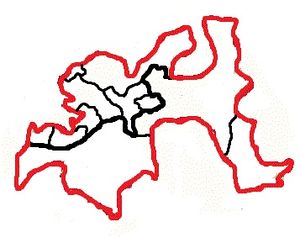

Mikkelsundian Military
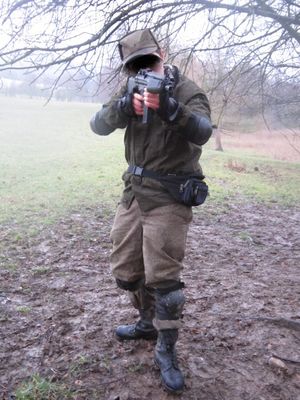
Mikkelsund has its own military called Gefjerld (= armed forces), but it is only symbolical. It is equiped with training weapons, but the level of other equip is good.Under Mikkelsundian military administrations is the Armefjehr Buildings in Mikkelsund (often administrative centers). Constabulary is called Taalerlaaners an it is the division of the army. Proposal are also air and maritime forces. The weapon originals often come frim Germany. The main battle riffle of Mikkelsundian armed forces is the G3 rifle, taalerlaaners are armed with MP5 submachine guns and Vz. 61 SMGs. As the camouflage pattern is equiped czech Vz. 92 work uniform.As the head covers is used the czech field caps or mikkelsundian Amforids. Goal of the armed forces is protect Mikkelsund, representate it and administrate and repair the military buildings. Secondary goal is to watch the water activities and protect the nature.
Mikkelsundian millitary buildings
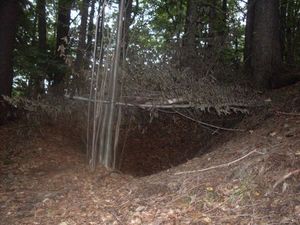
Mikkelsundian armed forces built a lot of pillboxes in their land. Their goal is to protect administrative centers, borders and strategic connections. The greatest of all is Saagmarskammp, the fort built into the river. Famous is also he pillboxes in Wallenhyykt near Vyypen and in Mayhavenm.Headquarters of Gefjerld residents in Westersaeten in Baegnaw.
Diplomatic relations of Mikkelsund
Mikkelsund has diplomatic relations with Lurk Federation and Izkanian State (Metonia)

